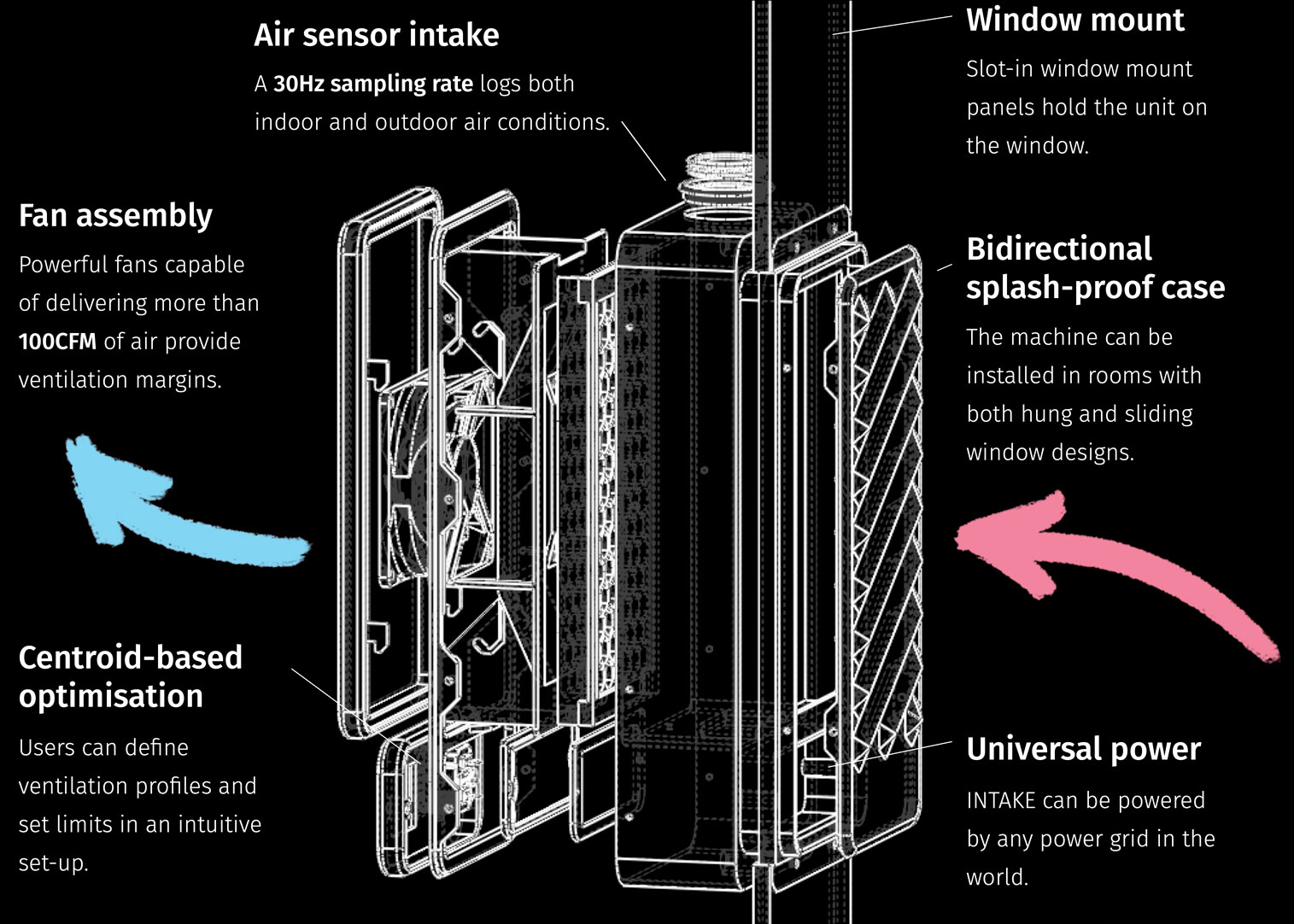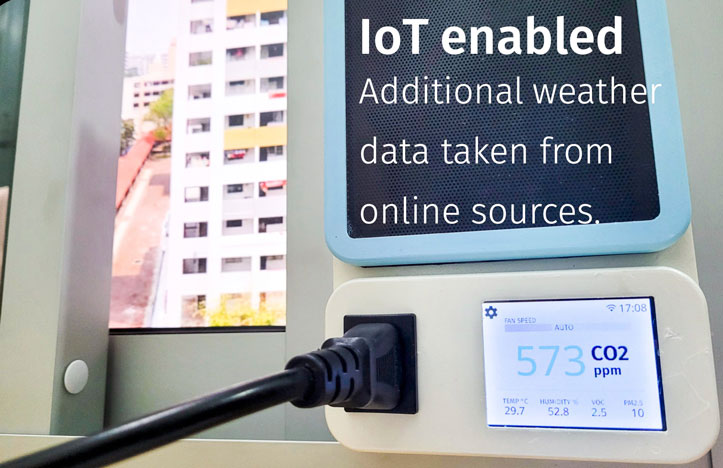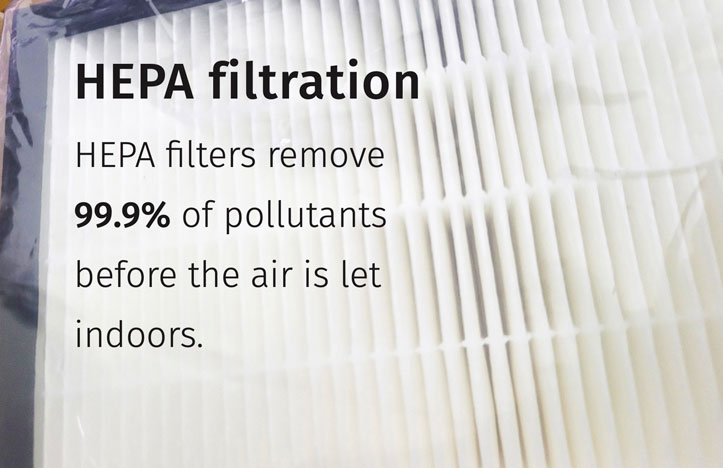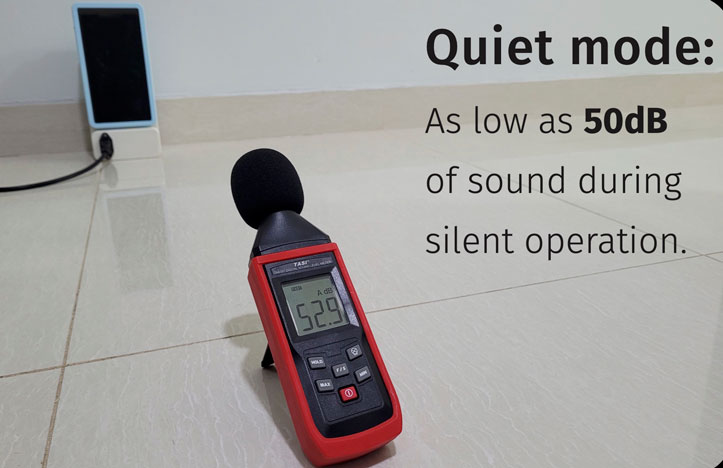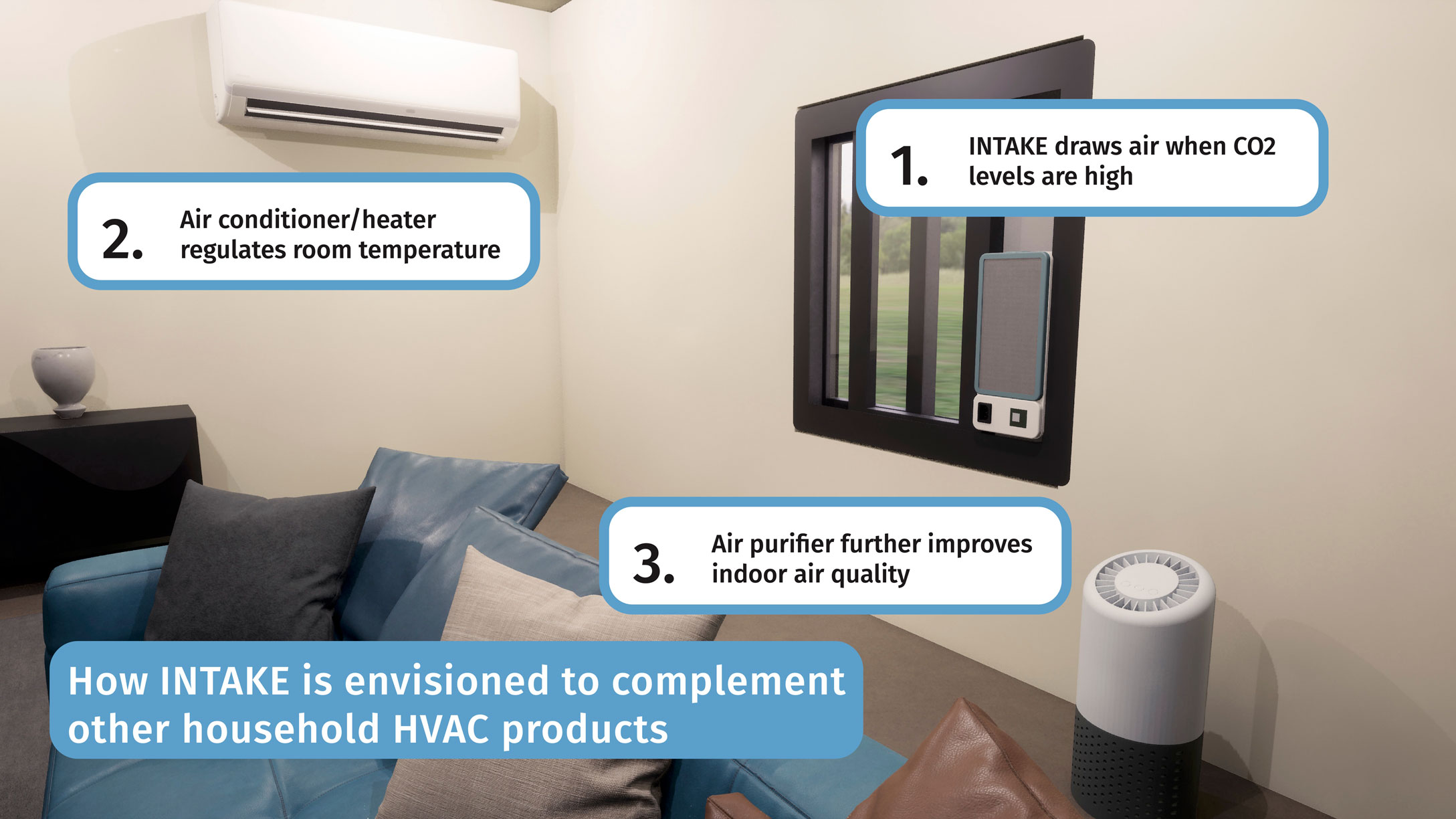Case Study
CO2 - An overlooked pollutant in indoor spaces
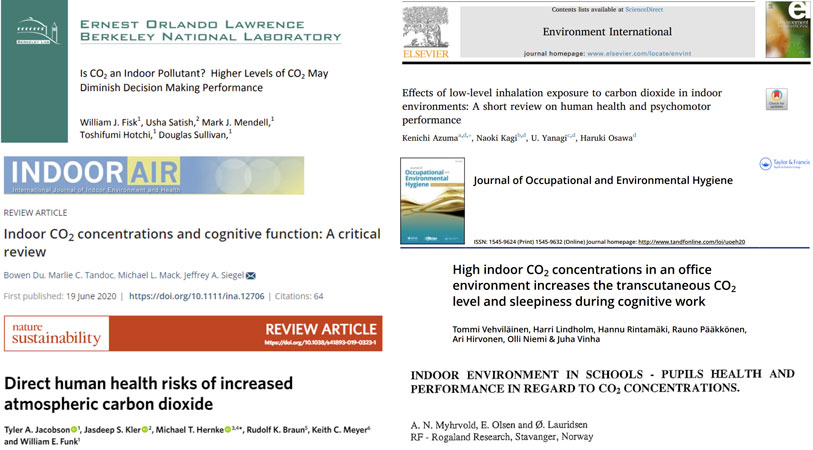
There is growing evidence that elevated CO2 concentrations that are common in indoor environments can cause various physical or psychomotor responses, including reductions in high-level cognitive abilities.
New studies indicate that:
• Upper airway irritation symptoms have been reported when ambient CO2 level exceeds 800PPM.
• A concentration of 1,000PPM is linked to a 3.4-5.3% decrease in test performance.
• 2,000-4,000PPM are found to cause drowsiness.
New regulations for indoor CO2 levels are being introduced: In Finland, office spaces have a 1,200ppm limit.
Opening windows: the easiest solution, yet not possible for many

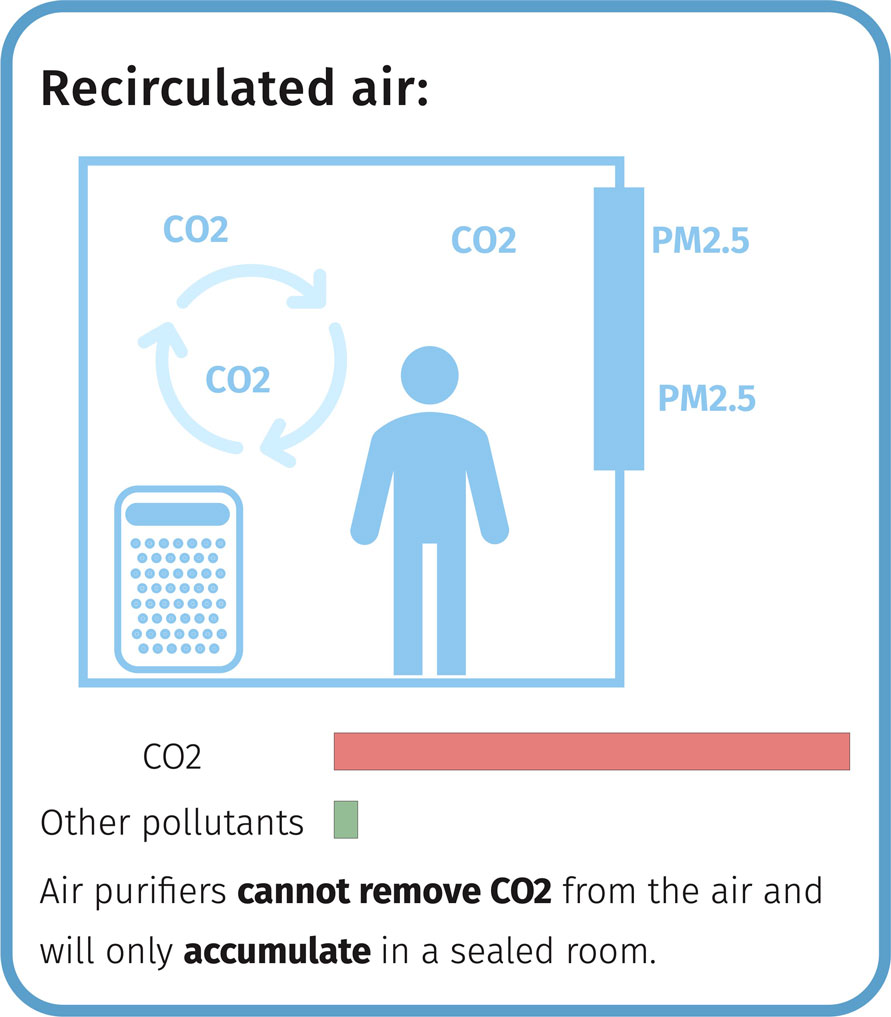
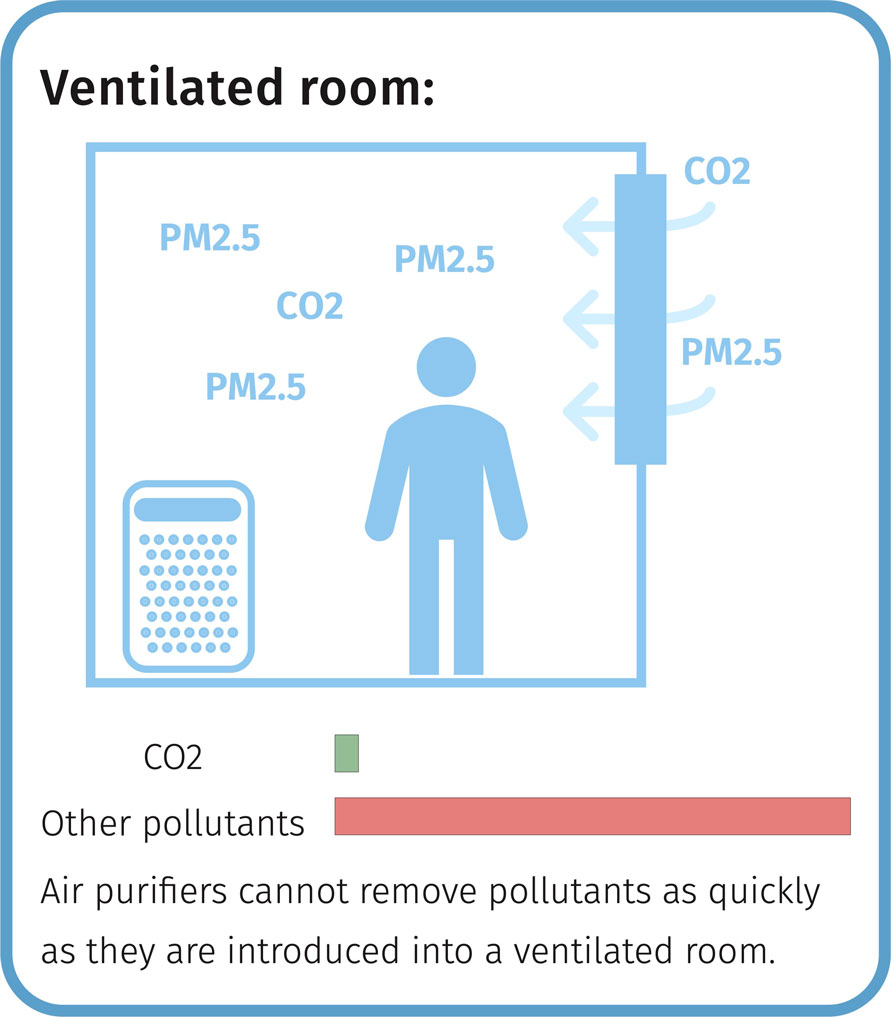
Proposed solution:
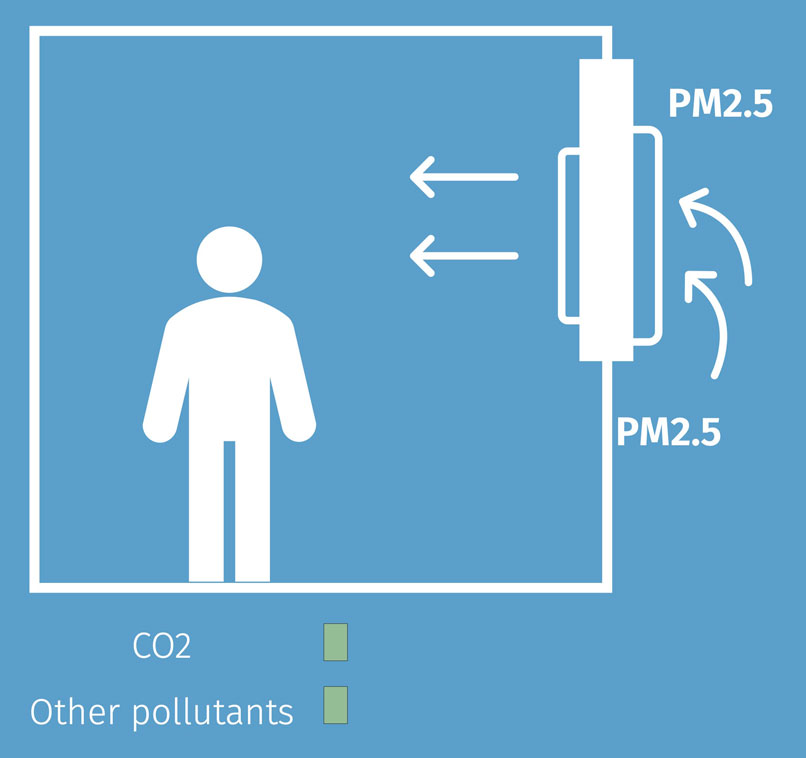
By installing a ventilation port that filters the air intake, outdoor pollutants can be kept out while fresh air is drawn into the room.
With sensors to determine air quality, the unit would be able to maintain CO2 temperature and other pollutant levels while utilising the HEPA filter more efficiently.
This is the concept for our airflow regulator.
INTAKE - Smart Ventilation + Filtration
